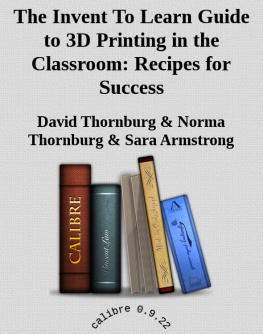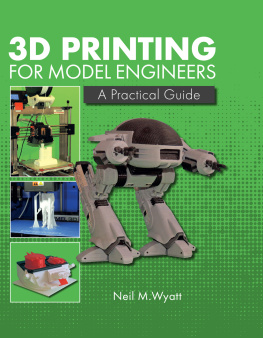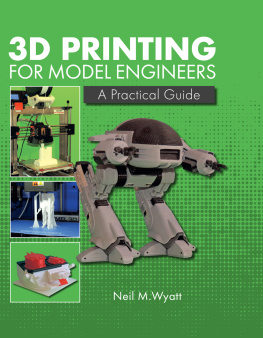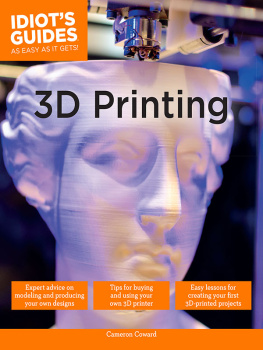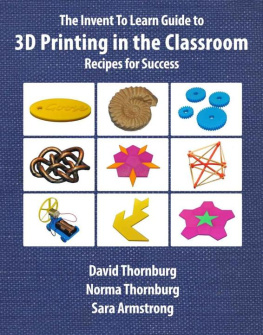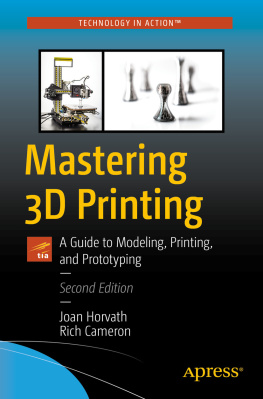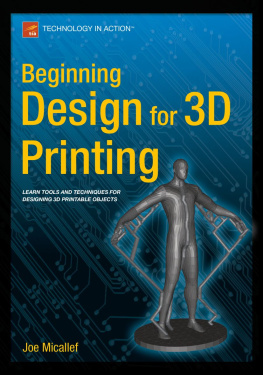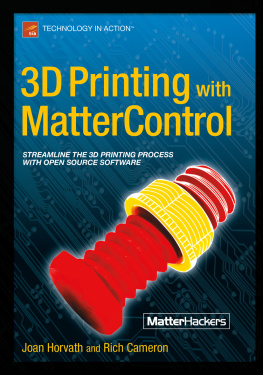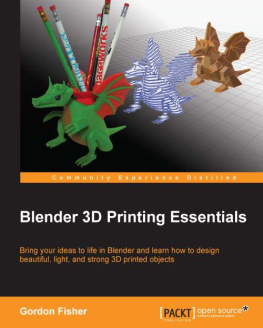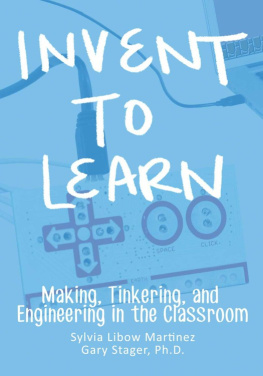
TABLE OF CONTENTS
2014 Thornburg Center. All rights reserved.
No part of this book may be reproduced, scanned, or distributed in any form or by any means,
electronic, or mechanical without permission in writing from the publisher.
Invent To Learn is a trademark of Constructing Modern Knowledge Press
All trademarks and servicemarks mentioned in this book are the property of their respective owners.
Constructing Modern Knowledge Press
www.cmkpress.com
EDU039000 EDUCATION / Computers & Technology
EDU029030 EDUCATION / Teaching Methods & Materials / Science & Technology
ISBN: 978-0-9891511-5-3
Cover design: Yvonne Martinez
We are all designers now. We may as well get good at it.
Chris Anderson
Author of Makers: The New Industrial Revolution
Through presentations, workshops and books, Dr. David Thornburg uses his expertise in emerging
trends to help educators build the skills needed to use technology as a tool to teach for understanding, backed by solid research and a coherent vision of an educational future in which every learner thrives.
A staunch advocate of STEM education, he sees 3D printing as a powerful tool in the hands of all
students.
Norma Thornburg is an exceptional educator. Using her knowledge of emerging trends in technology,
she helps teachers develop constructivist strategies to engage students in learning activities that build valuable life skills for the 21st Century. Her interest in making covers a wide range. She has taught robotics courses, and is now working in the area of soft circuits fabric creations with embedded circuitry and in the crafting of ceramics using specialized 3D printers.
Dr. Sara Armstrong is an educational consultant, keynote speaker, presenter, and writer working to
provide resources and tools for change in education. With over 40 years as an educator, Sara has
developed and implemented workshops on many topics, including project-based learning, information
literacy, digital and oral tradition storytelling, technology integration, and global resources for
education. She sees 3D printing as a powerful tool for bringing inquiry and project-based learning into the classroom.

by Sylvia Libow Martinez and Gary Stager
Theres a technological and creative revolution underway. Amazing new tools, materials and skills
turn us all into makers. Using technology to make, repair or customize the things we need brings
engineering, design and computer science to the masses. Fortunately for educators, this maker
movement overlaps with the natural inclinations of children and the power of learning by doing. The
active learner is at the center of the learning process, amplifying the best traditions of progressive education.
In this practical guide, Sylvia Martinez and Gary Stager provide K12 educators with the how, why,
and cool stuff that supports classroom making.
Learning is often confused with education. Martinez and Stager clearly describe learning learning
through engagement, design and building. The best way to understand circles is to reinvent the wheel.
Nicholas Negroponte, Founder MIT Media Lab & One Laptop Per Child
The Maker Movement in schools now has a bible. Larry Magid, Technology Columnist,
Huffington Post, San Jose Mercury News, CBS Radio
Educators will be hard pressed to find a more essential, important book for making sense of not just the exciting, game-changing maker technologies that are currently exploding around us, but of the
absolutely powerful learning opportunities they present for our students as well. Sylvia Martinez and Gary Stager are a teachers perfect guides into this fast growing, innovative world of creative problem solving and construction using an array of new, innovative computing devices, many of which fit in
our pockets. Even more, Invent To Learn creates a required new context for modern learning, and it
offers an accessible roadmap for re-imagining schools, classrooms, and personal practice. Its a must read for those wanting to remain relevant in their students learning lives. Will Richardson,Author of Why School? How Education Must Change When Learning and Information Are Everywhere
3D printers are hot. Theyre so hot that even schools are buying them. Although, schools are thought to be late adopters of emerging technology, Ive been pleasantly surprised by how many already own
3D printers.
Investing in a schools first 3D printer may be a down payment on the future of education; a future in which learning to learn with ones head, heart, and hands will be equally critical. Making things is a great way to learn and an ability to make the things you need is an important 21st Century skill. The confidence and competence required to solve problems that the school curriculum or your teachers
never anticipated will be the mark of a life well lived.
That said, once a school gets their 3D printer working reliably enough for each seventh grader to print an identical Yoda keychain, many educators are at a loss for next steps. Thats where this book comes in. David, Norma, and Sara share 18 projects designed to help teachers teach 3D design and enrich
multiple curricular subjects.
Once you get the hang of 3D printing, you will realize how simple the hardware is. The real revolution may not be the printer as much as it is the democratization of design and the Z-axis.
For decades, CAD/CAM (computer-aided design/computer-aided manufacturing) software was too
complicated and expensive for more than a few students to use. It was relegated to drafting classes and vocational settings. Now affordable and accessible software like Tinkercad make design childs play.
The ease of use associated with this new generation software does not mean that the design process
has become any less rigorous. Design is where the mathematical reasoning, artistic sensibility, and
engineering processes come to the fore.
We were all taught about the X- and Y-axes in school math class. Some of us may even use that
coordinate system from time-to-time. However, with the exception of the occasional SAT question
about the volume of a cylinder, you might conclude that we live in a 2D world. 3D printing and its
design software bring us the Z-axis and provide an authentic context for using and understanding
three-dimensional space. This book makes the conscious pedagogical decision to transition from 2D
design to 3D artifact.
A common trope in educational discussions is, Technology changes constantly. Oh, if only that were true. If your school has spent two decades teaching kids to make PowerPoint presentations on subjects they dont care about for an audience that doesnt exist, then technology hasnt changed much for
you or your students (in school) since Alf went off the air.
In rare instances, there are revolutionary advances in technology that impact classroom practice. The technologies most closely associated with the maker movement, including: 3D printers and laser
cutters, open-source microcontrollers like Arduino, and new ways to embed circuitry in everyday
objects may indeed represent a paradigm shift in educational technology.
Since affordable and accessible 3D design is in its infancy, the authors provide you with experience exploring a variety of different software environments. You will also need to adapt instructions for the proclivities of your specific printer. Through this experience, you should be able to decide which
Next page
